- Cirque du Soleil’s “Crystal” at Fishers Event Center, a photo preview
- The Gatlin Brothers at Brown Country Music Center
- The Black Keys will perform at Innings Festival, Feb 21.
- Gary Clark Jr. will rock the Innings Festival 2025
- Fall Out Boy to appear at Innings Festival in February
- Kris Kristofferson passes away at 88
Concert Review: Sting at Mile One Centre, St. John’s, Newfoundland
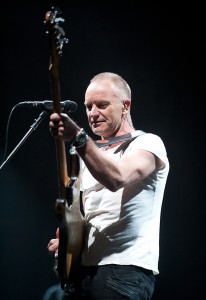 Just before crossing the Atlantic to start a European tour, Sting and his all-star band stopped off in St. John’s, Newfoundland on Wednesday to give the crowd at Mile One Centre two hours of back-to-back hits from his Police and solo catalogue. Marketed as “Back to Bass,” this tour sees Sting re-assuming the role of time keeper on his trusty, vintage ‘50s Fender Precision basses. Switching effortlessly between a fretted and fretless model, he co-owned a mean groove throughout the show with world-renowned drummer Vinnie Colaiuta, whose history with Sting goes back to the 1990 tour for The Soul Cages. Longtime Sting guitarist Dominic Miller and veteran jazz keyboardist David Sancious texturized the mix with tasteful runs and flourishes, while violinist/bouzouki player Peter Ticknell and backup singer Jo Lawry contributed soulful instrumentation and powerful harmonies.
Just before crossing the Atlantic to start a European tour, Sting and his all-star band stopped off in St. John’s, Newfoundland on Wednesday to give the crowd at Mile One Centre two hours of back-to-back hits from his Police and solo catalogue. Marketed as “Back to Bass,” this tour sees Sting re-assuming the role of time keeper on his trusty, vintage ‘50s Fender Precision basses. Switching effortlessly between a fretted and fretless model, he co-owned a mean groove throughout the show with world-renowned drummer Vinnie Colaiuta, whose history with Sting goes back to the 1990 tour for The Soul Cages. Longtime Sting guitarist Dominic Miller and veteran jazz keyboardist David Sancious texturized the mix with tasteful runs and flourishes, while violinist/bouzouki player Peter Ticknell and backup singer Jo Lawry contributed soulful instrumentation and powerful harmonies.
The lights went down shortly after the scheduled start time of 8pm, and Sting followed the band out on stage as they assumed their positions and launched directly into his 1993 solo hit, “If I Ever Lose My Faith,” which awarded him a Grammy for Best Vocal Performance in 1994. The band was casually dressed. Sting wore a basic white t-shirt, impossibly tight black pants, and black boots. He is in great shape for 61 years old, physically putting to shame most men half his age. He casually moved around the stage throughout the night, connecting with his band and interacting with the audience in front and in the side sections. Thankfully there were no distracting video screens, which meant everyone in the audience was bearing down solely on Sting and the band for the duration of the show.
This tour could have also been billed as “back to basics,” as evidenced by lighting designer/director Danny Nolan’s simple wash of intelligent white lights panning the stage from behind as a mixture of blue, red, and purple illuminated the band from above. The front-of-house sound was full but not overbearing, signaling a well-honed sound crew broken in from a long tour. Although Sting used an easily visible wireless setup for his bass, his in-ear wireless monitor was almost invisible in his left ear. He relied mostly on traditional floor monitors and the classic setup of “sidefill” – a separate monitor system that throws a wash of sound from the sides of the stage. This setup shows that if done right, you can have the best of both worlds.
Adding to this mighty wall of sonic power was Sting’s bass amp. It was less an amp and more a P.A. system unto itself, featuring two large 18” subs and two 12” top columns that could easily power a whole band in a smaller room. It emitted a mighty thump that pounded the chest but could have used slightly more articulation in the lower registers. Miller’s guitar setup had similar firepower, featuring two Mesa Boogie 100-watt 212 combo amps supported by two extension cabinets. His sound out front was warm and thick for a Stratocaster, the tone of which is usually thinner and less meaty. This type of old school amp setup incorporated by Sting and Miller is rarely seen in today’s newfangled concerts, where everyone is typically running through virtual amps patched directly to the P.A. system.
Sting wasted no time getting to the Police hits. The second song of the night, “Every Little Thing She Does is Magic” (from 1981’s Ghost in the Machine), was the first in a varied list of songs he’d play from his inaugural band. His approach for this tune, as well as for the other Police material throughout the night, was minimalist yet creative. Often the signature guitar riffs of Andy Summers were somewhat disappointingly absent, with Miller opting for simpler choral accompaniment. The only exception was the 1978 hit “Roxanne,” where the reggae-influenced guitar chops are an irreplaceable part of the song. Sting also toyed with the intro and outro arrangements, adding jazz-influenced chord changes that no doubt satisfied the appetite of the musical giants backing him up.
Sting announced before launching into the fourth song, “All This Time,” that he was hungover from the night before, and that he’d climbed a local hiking trail in the afternoon and puked. Whether it was true or not, it nevertheless delighted the crowd as they cheered loudly. There was, however, no sign of the previous night’s imbibing as his voice almost effortlessly rose to the challenge of each song. Sting eclipses most of his peers these days by performing his songs in the original keys. His vocal performances on classic Police and solo material are often in a high place vocally that mere mortals cannot reach, and his age has not abbreviated this command of the high register. He even did “Roxanne” in the impossibly high G Minor of the original. He also did the first encore closer, “Every Breath You Take,” in the original key of A, which gets particularly high in the bridge as it moves to an F-G-A ascending progression and sends his voice into the upper stretches. Credit must be given to backup singer Jo Lawry as well, who accompanied Sting in some of those passages and often had to hit thirds or fifths above him. Her broad range and slight rasp created just the right mixture of feel and technical proficiency. She came out from the shadows of the back riser toward the end of the show to sing from Miller’s microphone and dance along to the groove. The show could be better served by her stage presence being featured more prominently.
A highlight of the night was a 10-minute fusion jam in the funky time signature of 7/8 (only heard on such pop anomalies as Pink Floyd’s “Money” and Peter Gabriel’s “Salisbury Hill”). This jam gave David Sancious time to stretch out and incorporate his rich musical mind into the mix. Sancious began his career in Springsteen’s E-Street Band in 1973 and has since gone on to grace the stage and studio with the likes of Peter Gabriel, Jeff Beck, Eric Clapton, and many more. His wizardry shone through as he dug into the keys with percussive authority that affirmed his place as one of the true jazz greats of our age. Peter Ticknell also got his turn at bat during the jam, knocking a reverb-drenched violin interlude out of the park.
After a chunky 90 minutes and two rousing encores, Sting and band returned yet again to close out the night with ”Fragile” from his 1987 album Nothing Like the Sun. Sting manned the classical guitar for this number, while the band provided the necessary ethereal support that the song demands. He introduced the song by saying that he was going to leave the crowd with a soothing number to send them home “to get laid.” As an aside, he then jokingly said, “I won’t be,” which no doubt sent a jolt through the hordes of adoring women who had already pictured this in their mind 100 times throughout the two-hour performance. But Sting’s visual appeal and charismatic stage presence is merely a coincidental aside to his prowess as a songwriter, vocalist, and bassist. This, in addition to his talent for hand-picking the best players in the business, made the last show of his Canadian tour an unforgettable one for Newfoundland fans. His last words were a promise to return, and I’m sure everyone is hoping he will follow through.
(All photos of Mile One concert by Bud Gaulton)
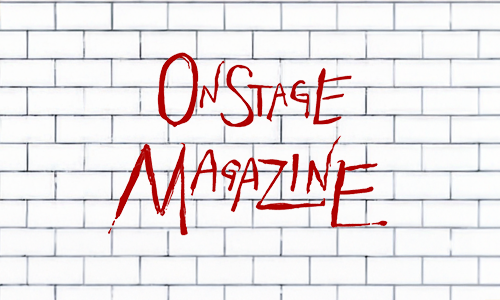
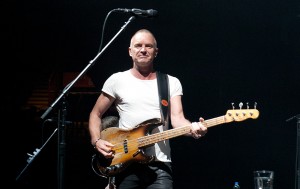
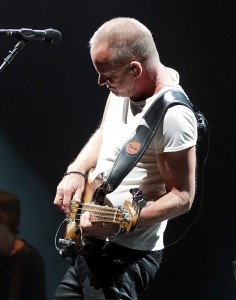
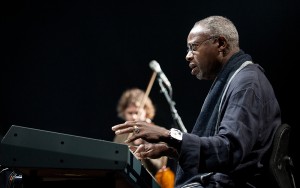

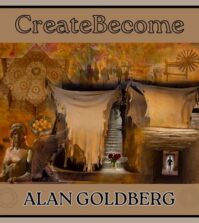
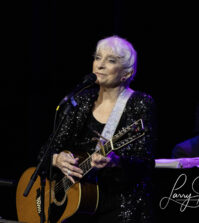


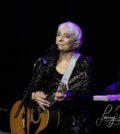

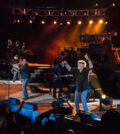
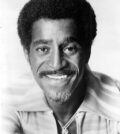
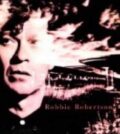
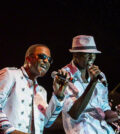




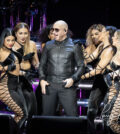
10 Comments